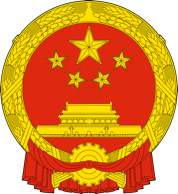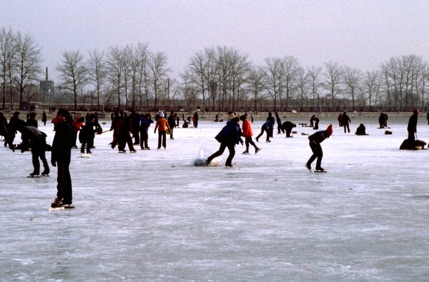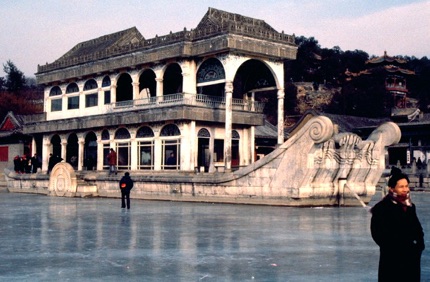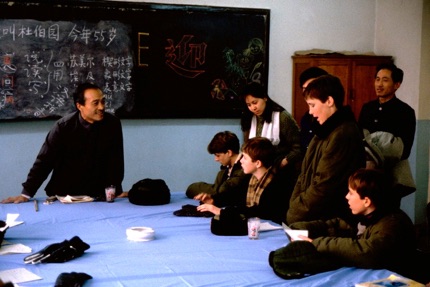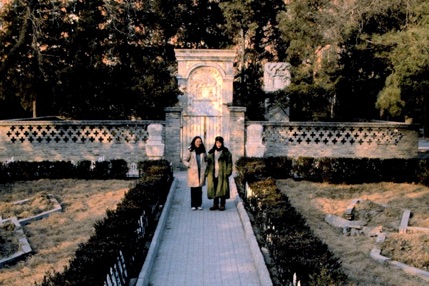China 1985

Kyrgyzstan and Tajikistan 2018

This was a particularly long and tiring day. The boys had their first visit to the Beijing Foreign Languages School in the morning, leaving the hotel at about 8:30am. I was a little late as I had to go with one of the students who had left his Qantas ticket for the return flight back at Guangzhou Airport. We travelled by public bus together with our national guide to the Qantas office in order to organise a replacement. Although I had the ticket number, they could not arrange the issue of a new ticket without authorisation and confirmation of the ticket number from Sydney. Even then, they informed me, they could only issue a letter of authority to issue a ticket, as CAAC retains exclusive rights to issue all air tickets in China.
From the Qantas office, we took a taxi to the school, which was in the far western part of the city, to meet the others. During this first visit, the staff discussed the activities which were to take place during later visits while the students had a most enjoyable Chinese language lesson, part of which was to stand and say something about themselves in Chinese. We would have preferred, however, for the students to have been able to meet and mix with the local students than to be siphoned off on their own.
We travelled next to the Summer Palace. With the breezes blowing gently across Kunming Lake, it was designed to be a cool retreat for the emperor during Beijing’s hot summer months. However, with the wind blowing across the frozen Kunming Lake in winter, it is cold!!! The ice skaters on the lake like it, but we were not as impressed with the temperature. We inspected the palace complex, and after lunch had a close look at the famous marble boat which the Dowager Empress had built with funds intended for the modernisation of China’s navy in the 1890s. From the boat we walked across the frozen Kunming Lake back towards the bus. The ice was considerably warmer to walk on than the cold cement, but it was unnerving to walk on the ice and have it creaking and groaning underneath, with white cracks appearing with several footsteps. Every year they lose about a dozen people who fall through the ice into the cold waters beneath, so walking across the lake on the ice was not an experience I really enjoyed.
Our next step was a visit to Matteo Ricci’s tomb. Ricci, an Italian Jesuit, was one of the first missionaries to China, arriving in Beijing in 1601. Together with several other Jesuits, he became very close to the Emperor and impressed him with the modern European science, mathematics and astronomy he brought with him. Indeed, he so impressed the Emperor that he almost succeeded in converting the Emperor and the royal household to Christianity.
The grave was damaged during the Cultural Revolution. This is probably not surprising, as of all places for it to be located, it now finds itself in the grounds of a College that has been set up to educate cadres of the Communist Party. Nonetheless, it has now been restored, and it was possible to have a close look at it and read its Latin inscription.
Two shopping stops, each of one hour’s duration followed, first to the Beijing Exhibition Hall (another Soviet donation of Stalinist architecture) and then to the Chongwenmen district. After dinner in Chongwenmen, we returned to the Foreign Languages School to see as much of a Peking Opera as the boys could tolerate. The costumes were magnificent, but I suspect that students would have preferred the music to include at least one of the following: rhythm, tune, melody or tone. It didn’t. We finally got back to the hotel at 10:30pm after a very long day.

Day 15
Beijing
Tuesday, 17 December 1985
